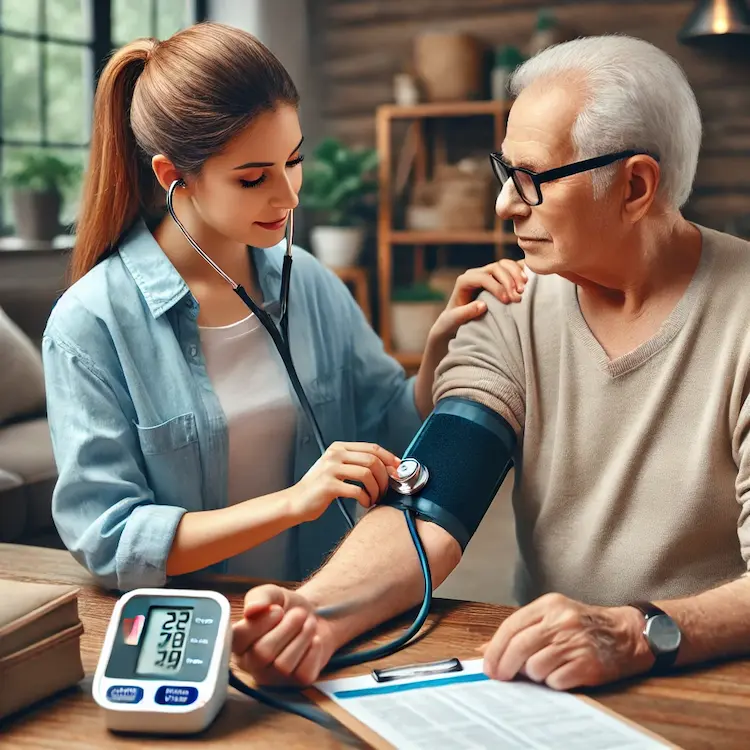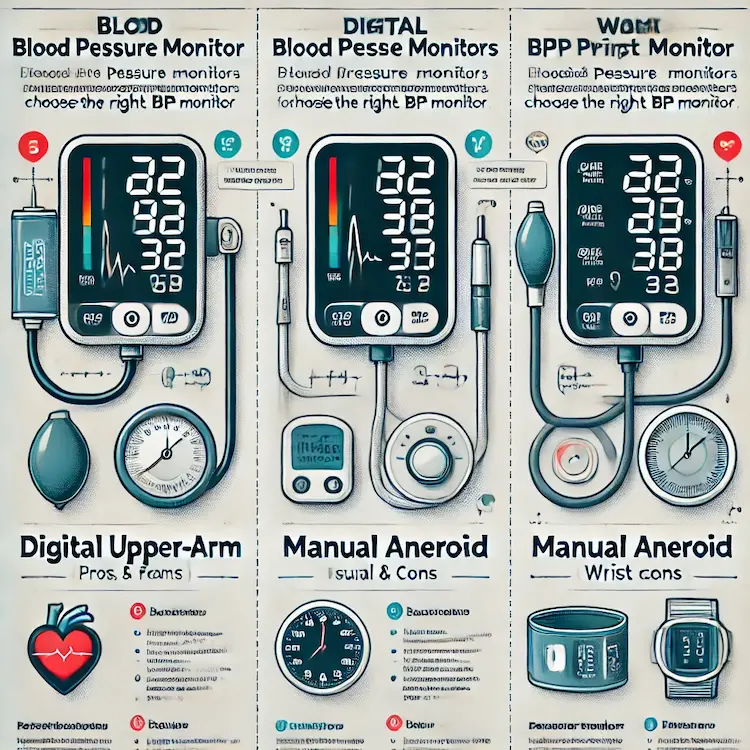Hypertension, or high blood pressure, is a common health concern among the elderly. It increases the risk of heart disease, stroke, kidney failure, and other complications. Regular blood pressure monitoring is essential for managing hypertension, and home sphygmomanometer (Sphyg) HBPM and elderly patients has emerged as a convenient and effective solution.
This article explores the benefits of home Sphyg monitoring for elderly patients with hypertension, covering its importance, societal and health impacts, relevant statistics, and comparisons of different methods. It also provides practical advice for patients and caregivers.
Why Home Blood Pressure Monitoring Matters for Elderly Patients
Improved Blood Pressure Management
Elderly individuals often experience fluctuating blood pressure due to factors like medication, diet, and stress. Relying only on clinic visits for BP checks may not provide a complete picture of their condition. Home Sphyg monitoring enables frequent checks, helping patients track changes and respond quickly to abnormal readings.
Early Detection of Hypertension Complications
Frequent monitoring at home helps identify warning signs of serious conditions such as:
- Hypertensive crisis (BP higher than 180/120 mmHg)
- Morning hypertension, which is linked to an increased risk of stroke
- Masked hypertension, where BP appears normal in a clinic but is high at home
Timely detection allows for prompt medical intervention, preventing severe outcomes.
Reduced White-Coat Syndrome and Masked Hypertension
Some elderly patients experience white-coat hypertension, where their BP rises in medical settings due to anxiety. Conversely, masked hypertension occurs when BP appears normal in clinics but is elevated at home. Home BP monitoring for elderly hypertension patients for more accurate readings, leading to better treatment decisions.

Enhanced Patient Engagement and Compliance
Patients who monitor their BP at home gain better insight into their condition. They become more proactive in following:
- Medication schedules
- Dietary restrictions (e.g., low-sodium intake)
- Lifestyle modifications (e.g., regular exercise)
Studies show that self-monitoring leads to a 20% greater reduction in BP compared to clinical monitoring alone. This empowerment results in better long-term health outcomes.
Health and Societal Impacts of Home BP Monitoring
Reduced Hospital Admissions
Regular BP monitoring helps detect issues before they escalate into emergencies. According to the American Heart Association, patients who monitor BP at home have 30% fewer hospital visits due to hypertension complications. This reduces the burden on healthcare systems.
Cost Savings for Patients and Healthcare Providers
Frequent clinic visits can be costly, especially for elderly individuals with mobility issues. Home monitoring eliminates unnecessary visits while ensuring continuous BP tracking. Over time, this leads to:
- Lower medical bills
- Reduced reliance on emergency care
- Savings on transportation costs
Greater Independence for Elderly Patients
Elderly individuals who can monitor their BP at home feel more in control of their health. This independence improves their mental well-being, reducing stress and anxiety about hypertension.
Comparing Different BP Monitoring Methods
There are several methods for monitoring blood pressure at home, each with unique advantages and limitations.
| Method | Advantages | Limitations |
|---|---|---|
| Automatic Digital Monitors | Easy to use, quick readings, memory storage | Can be inaccurate if used improperly |
| Manual (Aneroid) Monitors | More accurate when used correctly, no batteries needed | Requires training for proper use |
| Wrist Monitors | Portable and convenient | Less accurate, affected by wrist positioning |
| Ambulatory BP Monitoring (ABPM) | Tracks BP over 24 hours, detects patterns | Expensive, requires a doctor’s prescription |
Among these, automatic digital monitors are most commonly recommended for elderly patients due to ease of use.

Best Practices for Accurate Home BP Monitoring
To ensure reliable readings, HBPM and elderly patients should follow these guidelines:
Choosing the Right Device
- Select a clinically validated monitor.
- Use an upper-arm cuff monitor rather than a wrist monitor for better accuracy.
- Ensure the cuff size fits properly—too tight or too loose cuffs lead to incorrect readings.
Proper Measurement Technique
- Rest for 5 minutes before measuring.
- Sit in a chair with feet flat on the ground and back supported.
- Place the cuff on a bare upper arm at heart level.
- Avoid talking, moving, or crossing legs during measurement.
- Take two to three readings, one minute apart, and record the average.
Monitoring at the Right Time
- Measure BP at the same time daily (e.g., morning and evening).
- Avoid measuring right after meals, exercise, or consuming caffeine.
Keeping a BP Log
- Record readings manually or use a digital monitor with memory storage.
- Share logs with healthcare providers for better treatment adjustments.
Addressing Common Concerns About Home Monitoring
Are Home BP Readings Reliable?
Yes, but only if proper techniques are followed. Inaccurate readings often result from:
- Incorrect cuff placement
- Movement during measurement
- Using a non-validated device
Can Elderly Patients Use BP Monitors Independently?
Most HBPM and elderly patients can use automatic monitors easily. However, caregivers may need to assist those with:
- Arthritis (difficulty using buttons)
- Cognitive impairment (memory loss, dementia)
Should Home Readings Replace Doctor Visits?
No. Home monitoring is a supplement, not a substitute. Regular checkups are still essential for:
- Medication adjustments
- Comprehensive cardiovascular assessments
Conclusion
Home sphygmomanometer (Sph) monitoring is a powerful tool for elderly hypertension patients. It allows for better BP management, early detection of complications, reduced hospital visits, and greater patient empowerment. By selecting the right device, using proper techniques, and maintaining a BP log, elderly individuals can take control of their health more effectively.
Key Takeaways
Home BP monitoring provides more accurate readings, avoiding white-coat and masked hypertension.
It reduces hospital visits and healthcare costs by preventing complications.
Automatic digital monitors are the best choice for most elderly patients.
Proper technique and consistency in measurement ensure accurate results.
Home monitoring should complement, not replace, regular doctor visits.
Actionable Recommendations
Choose a validated upper-arm BP monitor for accuracy.
Monitor BP at the same time daily under consistent conditions.
Maintain a BP log and share it with healthcare providers.
Follow doctor’s recommendations and adjust lifestyle habits accordingly.
If unsure, ask a pharmacist or doctor for guidance on proper device use.


